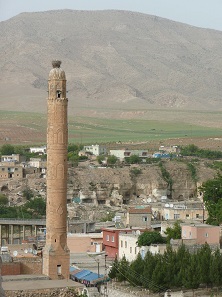by Kate Fitz-Gibbon
October 20, 2016 – The Ilisu dam project to contain the waters of the Tigris will force out residents of the town of Hasankeyf and cover the remains of at least 300 sites and 12,000 years of history under 200 feet of water. When completed, the dam is expected to generate 2 percent of Turkey’s electricity supply.
The dam project began in the 1980s and has been delayed many times, notably in 2009, when European backers withdrew its funding over the damage the dam would cause to the area’s cultural heritage. Turkish archaeologists say that although salvage archaeological work has been ongoing, 85% of the sites in the area will be submerged before work can begin on them. According to an extensive article in National Geographic, an alternative plan for five smaller dams that would leave Hasankeyf intact received no response from the government. The Turkish central government has pushed the Ilisu dam project forward regardless and says that it will be completed this year.
This town will soon be covered by the waters of the Tigris. Photo: Nevit Dilmen / http://creativecommons.org/licenses/by-sa/3.0/
The area around Hasankeyf has been occupied since the earliest Mesopotamian period, and the remains of ancient cave dwellings sit near a medieval citadel, not far from an Artuqid bridge, constructed by a Turkmen dynasty that ruled in Eastern Anatolia in the 11-12th century.
Hasankeyf’s town residents are poor; most make their living from sheep-herding or rug weaving. The Turkish government has built a new town of apartment complexes on higher land above the dam site, but many of the people of Hasankeyf refuse to move, saying they love the homes and orchards built by their grandfathers and great-grandfathers. They say they will never be able to pay off the loans the government will make for them to buy the new apartments, which will cost about eight times the value of their current homes.
Environmentalists have voiced serious concerns as well. When the project is completed, the reduction in water flow is expected to dry up huge areas of marshland in southern Iraq and to collapse that region’s traditional ecology and its wetland subsistence economy.
This article appeared first on the Committee for Cultural Policy website.




